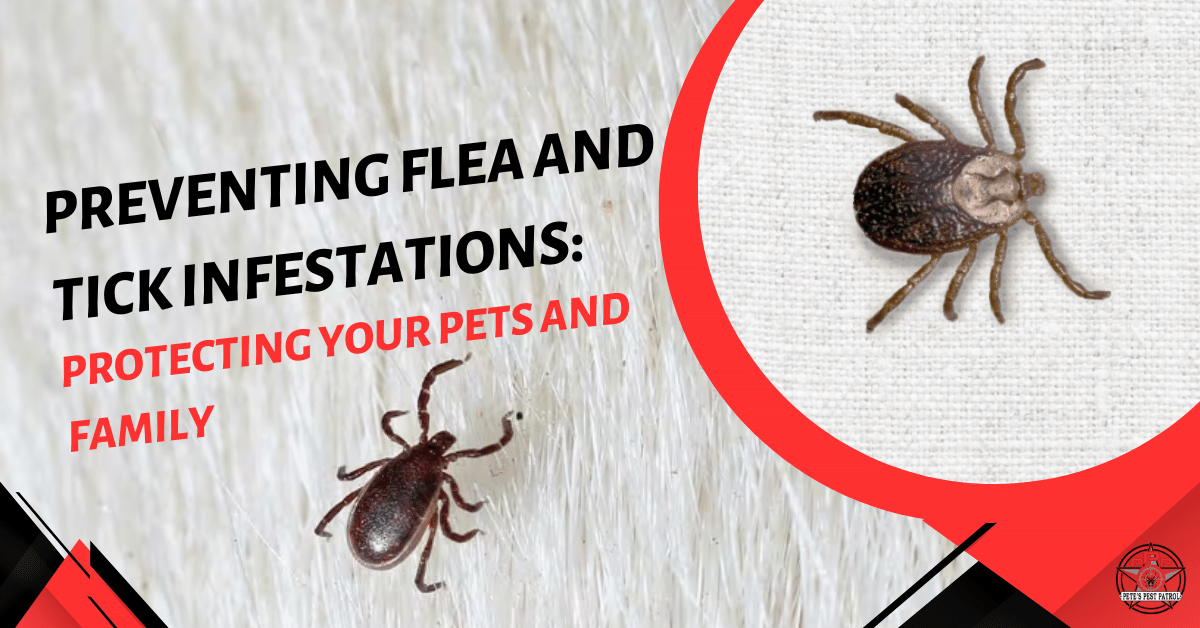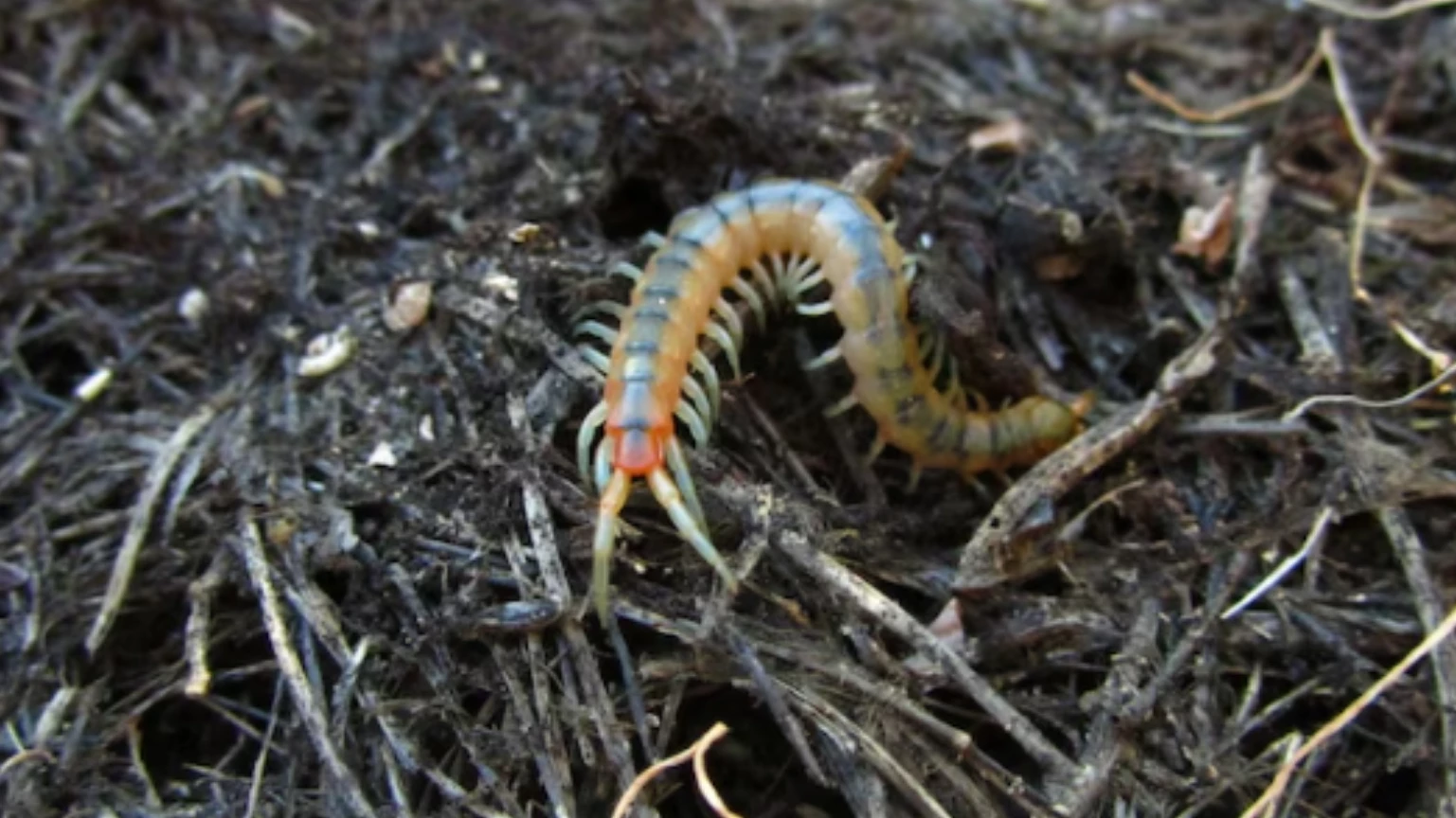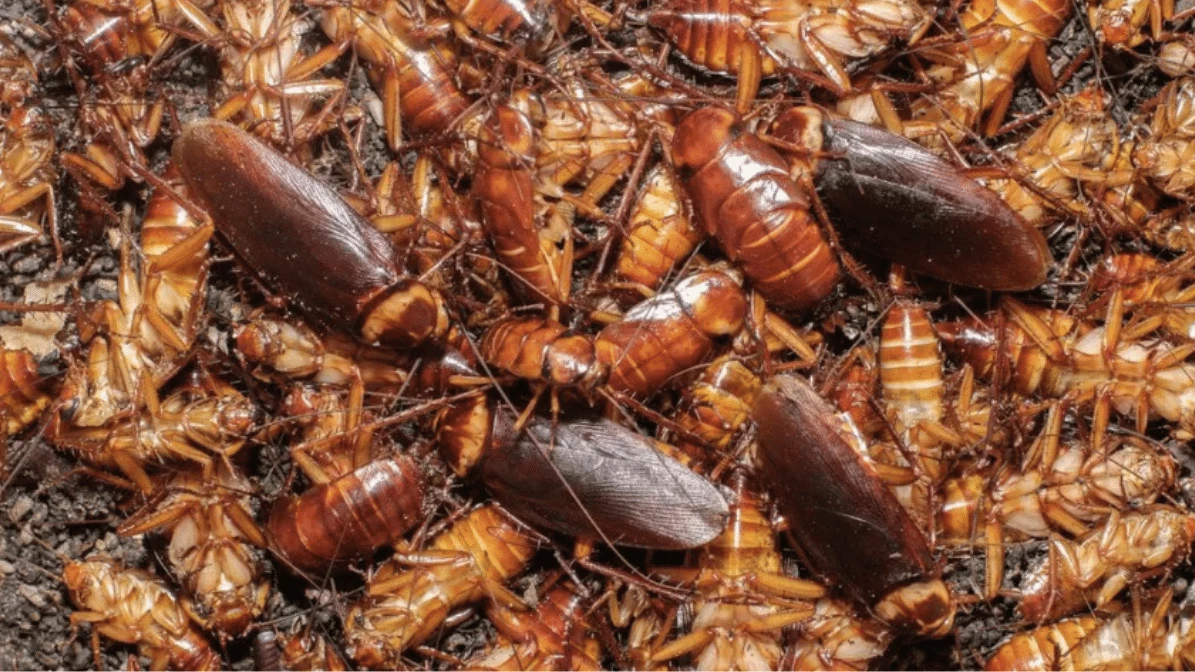Nothing ruins a nice summer day outside like the itchy, irritating bites from fleas and ticks. If you own a pet, you’ve likely experienced the frustration of trying to eliminate these pesky parasites and prevent future infestations.
Fleas and ticks don’t just affect our animal companions either—they can spread diseases to humans as well. With warmer weather upon us, it’s important to be proactive in using preventative treatments and maintaining an integrated pest management plan to keep these biting bugs at bay.
How can flea and tick infestations be prevented to protect pets and families?
- Regular Pet Inspections: Routinely check your pets should check for fleas and ticks, particularly after being outside. Comb their fur and inspect their skin for any crawling or attached parasites.
- Pet Grooming and Bathing: Regular grooming and bathing can aid in the elimination of ticks and fleas from your pets. Use specialized shampoos and combs designed to repel or eliminate these pests.
- Maintain a Clean Environment: Vacuum your home frequently, paying special attention to carpets, rugs, and pet bedding. Fabrics, including pet bedding, should be washed frequently in hot water to kill hidden fleas or ticks.
- Yard Maintenance: Keep your yard well-maintained by regularly mowing the grass and trimming shrubs and bushes. Fleas and ticks often hide in tall grasses and vegetation.
- Fencing: If possible, install a fence to keep wild animals, which can carry fleas and ticks, out of your yard.
- Pet Preventatives: Consult your veterinarian about using preventatives for fleas and ticks, including pills, collars, and topical treatments. These products are highly effective in preventing infestations.
- Regular Vet Visits: Schedule regular check-ups with your veterinarian to monitor your pet’s health and discuss flea and tick prevention options.
What are the key measures for safeguarding both pets and households from these pests?
- Use Preventative Products: Administer flea and tick preventatives your veterinarian recommends regularly.
- Frequent Cleaning: Maintain a clean home by vacuuming, washing pet bedding, and keeping your living space clutter-free.
- Landscaping: Keep your yard tidy and free from overgrown grass and vegetation where fleas and ticks can hide.
- Regular Inspections: Conduct routine inspections of your pets and your home to catch any signs of infestation early.
- Education: Learn about fleas and ticks’ habits and life cycles to better understand how to prevent them.
- Professional Pest Control: Consider professional pest control services for preventive treatments and infestation management.
Can professional pest control services effectively prevent flea and tick infestations?
Yes, professional pest control services can contribute significantly to the control and prevention of tick and flea infestations:
- Targeted Treatments: Pest control experts use specialized products and treatments to eliminate existing infestations and create a protective barrier against future ones.
- Expertise: Professionals have the knowledge and experience to identify and address the specific challenges of flea and tick infestations.
- Customized Plans: Pest control services can create tailored pest management plans based on your home and pets’ unique needs.
- Long-Term Solutions: Pest control professionals offer ongoing maintenance and prevention strategies to ensure your home remains pest-free.
What signs should pet owners watch for to detect the presence of fleas and ticks?
Pet owners should be vigilant and look out for the following signs that may indicate the presence of fleas and ticks:
- Excessive Scratching: Pets may scratch, bite, or lick themselves excessively if they have fleas or ticks.
- Visible Parasites: Inspect your pet’s fur and skin for the presence of tiny, dark, crawling insects or engorged ticks.
- Hair Loss: Fleas can cause hair loss in pets, particularly in areas where they bite and feed.
- Skin Irritation: Flea and tick bites can lead to redness, inflammation, and skin irritation in pets.
- Allergic Reactions: Some pets may develop allergic reactions to flea or tick bites, leading to severe itching and discomfort.
- Flea Dirt: Fleas leave behind small, dark specks known as “flea dirt” on a pet’s skin, which is flea excrement and a sign of infestation.
Where can families find expert advice on preventing and managing flea and tick issues?
For expert advice on preventing and managing flea and tick issues, families can turn to various sources:
- Veterinarians: Consult your veterinarian for guidance on preventive measures and treatment options for your pets.
- Local Pest Control Services: Professional pest control services like Pete’s Pest Patrol offer expert flea and tick prevention advice and can provide effective treatments.
- Online Resources: Numerous websites and blogs provide information and tips on flea and tick prevention and management.
- Pet Supply Stores: Staff at pet supply stores often know flea and tick prevention products and can offer advice on their usage.
- Local Animal Shelters: Contact local animal shelters or rescue organizations for recommendations and resources on managing flea and tick issues in pets.
By combining proactive prevention measures, regular inspections, and professional guidance, families can effectively protect their pets and households from the threats of flea and tick infestations, ensuring a safe and comfortable living environment for all.
Fleas and ticks are more than just a nuisance. These tiny, blood-sucking parasites can cause a variety of health problems for your pets and even your family. Avoiding danger is the best way to keep your loved ones safe companions and household from these pests. Regular grooming of your pets is the first effective step. By brushing their fur and inspecting them closely, early detection of infestation symptoms is possible.
Invest in high-quality, vet-recommended flea and tick prevention products. These include topical treatments, oral medications, or collars infused with chemicals that repel and kill these pests.
Remember that every pet is unique and may respond differently to these products. Therefore, it’s crucial to consult with your vet to determine the best option for your pet.
At Pete’s Pest Patrol, we understand the importance of safeguarding your pets and family from the threats posed by flea and tick infestations. You can protect your loved ones from these little parasites by taking preventative measures.
Taking Action to Prevent Flea and Tick Infestations is Essential for the Well-being of Your Pets and Family
At Pete’s Pest Patrol, we emphasize the importance of proactive action to prevent flea and tick infestations for the well-being of your beloved pets and family. In addition to being a major pain, these little bugs can cause serious health problems.
Your presence guarantees a dwelling that is both secure and pleasant by taking preventive measures, such as regular pet inspections, using effective preventatives, and seeking professional pest control services.
Don’t wait for an infestation to occur—act now to protect your pets’ and loved ones‘ health and happiness. Trust Pete’s Pest Patrol for expert guidance and solutions to keep your home pest-free and your family thriving.







